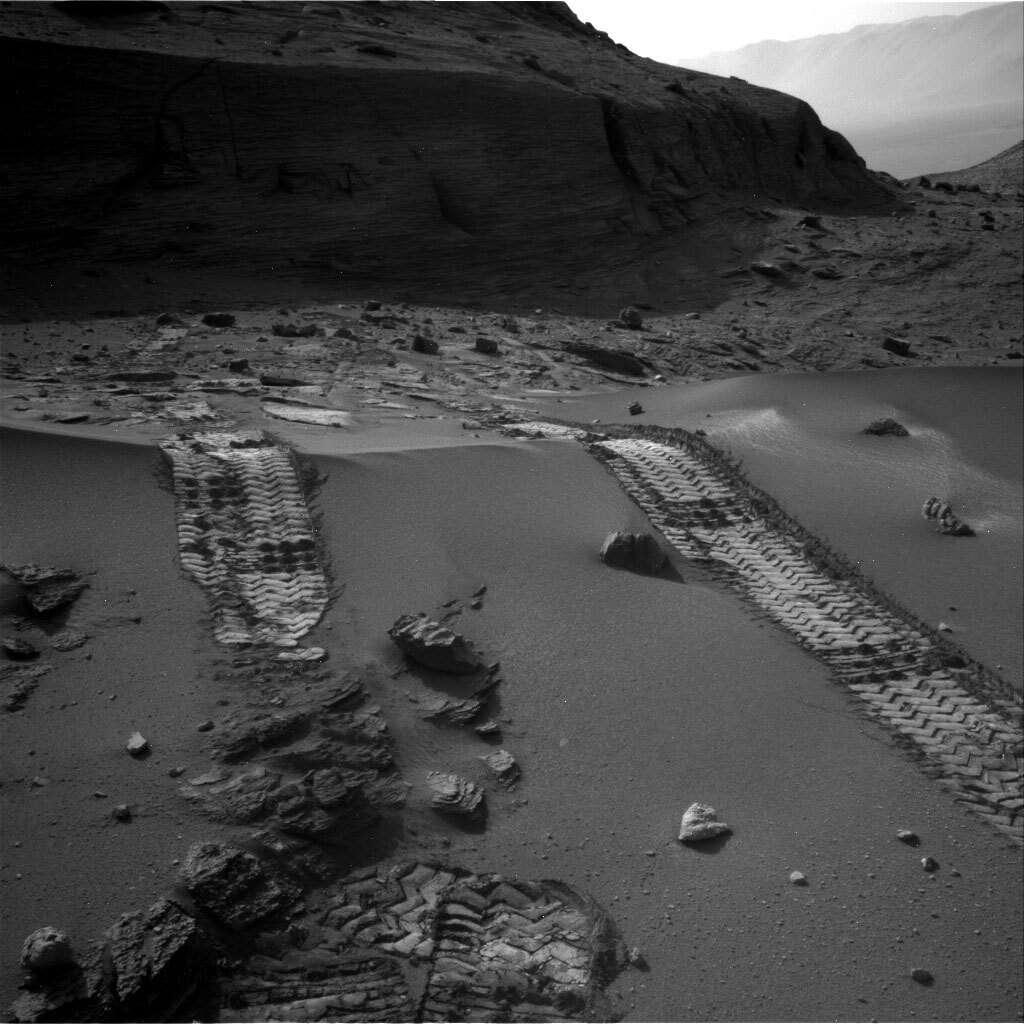2 min read

Curiosity is continuing the journey through Paraitepuy Pass. The image above shows why it is going to take some time to traverse through this area. Here the navigation cameras snapped a photo of Curiosity’s wheel tracks over a sand ripple. The rover was designed to overcome terrain like this, but the rover planners still want to develop the drive paths very carefully as we drive through these rocks and sand features.
We decided to take advantage of these sandy adventures, so today we focused our contact science on a beautiful ripple that ended up in our workspace. “El Silencio” is an APXS and MAHLI target near the crest of the ripple, while “Orinduik” is a MAHLI-only target on the flank of the ripple. Scientists hope that by comparing the sand grains on the top and side of the ripple they will be able to tell whether this ripple has recently been active.
We were also very excited to turn a corner and get new views of the buttes that we are heading towards. A new butte, called “Chenapau,” came into view today. The weekend plan includes Mastcam stereo images of Chenapau as well as the “Orinoco” and “Kukenan” buttes. ChemCam will also target Kukenan with two separate long distance RMI mosaics. To finish off the butte observations in this plan, there is a Mastcam mosaic being taken early in the morning to catch part of the “Bolivar” butte with good lighting. Other observations in the plan include a Mastcam 360, Mastcam stereo of three float rocks called “Parapouco 1,” “Parapouco 2,” and “Parapouco 3,” and ChemCam LIBS targets of rocks called “Los Botellas” and “Aricheng.”
Finally, this plan includes a ChemCam long distance RMI of the rapidly approaching marker bed. The marker bed was described in this previous update: Mission Updates: Sols 2897-2898: Marker Bed in Focus - NASA Mars. We have been observing this interesting feature in long distance images for years now, so it is great to finally be getting closer to it!
Written by Kristen Bennett, Planetary Geologist at USGS Astrogeology Science Center







